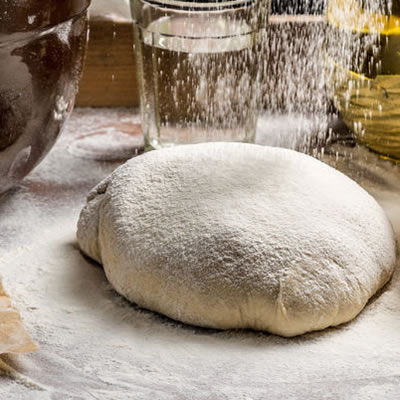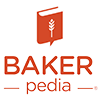
Damaged Starch
什么是受损的淀粉?
损坏淀粉是评估面包,饼干和其他烘焙产品的面粉质量的宝贵参数。它是指在小麦铣削期间物理上损坏或碎片的内核淀粉的一部分。1
面粉中受损的淀粉的量是内核硬度和铣削强度的函数。它在面包质量上具有正面和负面影响,因此应仔细校准其水平。
How does it work?
除蛋白质和多糖含量外,小麦粉受损的淀粉量为面包师提供了宝贵信息,例如:2
- 吸水能力
- 酵母活动期间fermentation(gassing power)
- 面团处理特性,例如粘性和对变形的抵抗力
Damaged starch absorbs up to 2–3 times more water than undamaged starch which only absorbs around 40% of its own weight.1,3
这种形式的淀粉还具有更大的抗链淀粉降解的敏感性酶(本机和添加)比未损坏的颗粒,这些颗粒产生可发酵糖(麦芽糖和葡萄糖),这些糖(麦芽糖和葡萄糖)支持生化酵。1,3
Application
受损的淀粉通常是面包粉规格的重要元素。测量受损淀粉的一些方法包括:1,4,5
- AACC国际官方方法76-31.01(谷物与谷物协会):It is based on damaged starch susceptibility to hydrolysis by amylases compared to native starch. The method employs a fungal α-amylase to hydrolyse and reduce the damaged starch to dextrins, followed by amyloglucosidase, which converts the dextrins to glucose, a reducing sugar. The glucose content is then determined by a spectrophotometric assay.
- Chopin SDmatic test:Is an automated amperometric method and is based on starch affinity to iodine. The higher the starch damage, the more iodine is bound and the smaller is the residual current.
- Near Infrared Reflectance (NIR) spectroscopy:是一种间接方法,比较了IR光谱中化学基团的光吸收。
Correlation between enzymatic and non-enzymatic methods is typically higher for flours from soft wheats than those from hard wheats.
受损淀粉的含量是面粉总淀粉的百分比:4
- Soft wheat: 1–4%
- Hard wheat (HRS and HRW): 6–12%
高速面包店的相关考虑因素
根据经验,小麦越硬,面粉蛋白越高,因此受损淀粉的含量越高。这反映在更大的吸水能力和较高的酵母活性(发酵率)中。2
高淀粉损伤可能会导致高速面包制作操作中的问题,以利用带有预先发射的面团系统。面团可能会变得过度粘稠和凝结(食物太多而发酵)。一旦聚合物被酶分解,就可以释放到被损坏的淀粉吸收和持有的水(这会在化妆过程中增加使用粉尘面粉的使用,并使面团处理更加困难)。2
在添加的糖和系统中,淀粉受损的淀粉非常重要,这些糖和系统使用中等至长发的时间,例如pomish,海绵,面团和酸面团;所有这些都是由面粉,水,贝克酵母,野生酵母和空气细菌组成的。在这种情况下,受损的淀粉是支持生物化学酵素的关键,使面团中的麸质产生独特的口味和香气,可改善成品的质量和质地。
In order to make the most out of the damaged starch, bread flours should have enough diastatic (amylolytic) activity. A falling number of 250–300 sec is ideal. Any deficiencies in amylase activity should be supplemented with malted barley flour (diastatic) or by using a dough conditioners mix that contains amylases.
铣削过程中淀粉颗粒的损害是不可避免和自然的,尽管磨坊主可以通过以下方式控制其范围:
- 调节滚动压力
- Selecting wheat hardness
- 使用足够的小麦调理水分水平
参考
- Cauvain,S.P。“原材料”。解决问题,第二版,伍德海德出版社,Elsevier Ltd.,2017年,第59-60页。
- Carson, G.R., and Edwards, N.M. “Criteria of Wheat and Flour quality.” Wheat Chemistry and Technology, 4th edition, AACC International, Inc., 2009, pp. 97–114.
- Miskelly,D。和Suter,D。“在铣削之前,之中和之后评估和管理小麦质量。”谷物谷物:评估和管理质量,第二版,伍德海德出版社,Elsevier Ltd.,2017年,第618-619页。
- Finnie, S., and Atwell, W.A. “Wheat and Flour Testing.” Wheat Flour, 2nd edition, AACC International, Inc., 2016, pp. 75–76.
- Serna-Saldivar, S.O. “Determination of Chemical and Nutritional Properties of Cereal Grains and Their Products.” Cereal Grains: Laboratory Reference and Procedures Manual, CRC Press, Taylor & Francis Group, LLC, 2012, p. 61.

伤害淀粉对蛋糕粉有什么影响?
嗨,萨加尔,这是一个很好的问题!如果您将其发布在我们的Baking Industry Professionals group,我们的团队和社区可以为答案提供帮助。